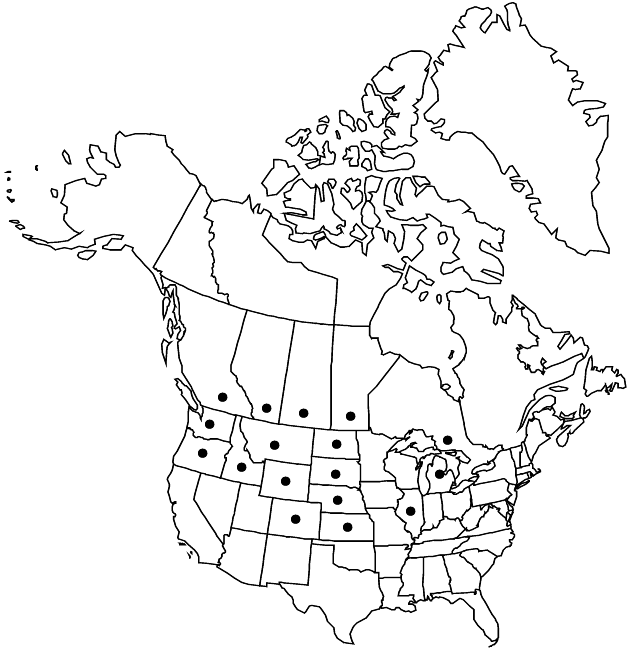Heterotheca villosa var. villosa
Stems decumbent to erect, 16–39 cm, moderately to densely strigose, sparsely to abundantly long-hirsute, eglandular or sparsely stipitate-glandular. Distal cauline leaf blades oblanceolate, 21–35 × 3.5–6 mm, bases narrowly cuneate to attenuate, margins flat, apices acute, faces moderately strigose (20–60 hairs/mm2), eglandular or sparsely stipitate-glandular. Heads 1–12(–25). Peduncles (5–)12–47(–67) mm, sparsely to densely hispido-strigose, eglandular; bracts subtending heads usually none, rarely linear-oblanceolate, leaflike. Involucres narrowly cylindric to campanulate (fresh), (5–)6–9(–11) mm. Phyllaries narrowly triangular-lanceolate, margins usually reddish purple distally, faces moderately to densely strigose, eglandular. Ray florets 10–27(–38), laminae (6.5–)8.5–15(–20) mm. 2n = 18, 36.
Phenology: Flowering (May–)Jun–Oct(–Nov, south).
Habitat: Silty, sandy loam or clay soils, chalk, or granitic soils, gravel soils, dry shale-limestone soils, red sandstone soils, travertine soils of sandhill prairies, pastures, grasslands, roadsides, railroad rights-of-way
Elevation: 300–2300(–2900) m
Distribution

Alta., B.C., Man., Ont., Sask., Colo., Idaho, Ill., Kans., Mich., Mont., Nebr., N.Dak., Oreg., S.Dak., Wash., Wyo.
Discussion
Variety villosa grows primarily in the Great Plains region; it is rare in Colorado, Idaho, Illinois, Kansas, and Oregon, and represented in Michigan and southern Ontario by chance introduction.
Selected References
None.